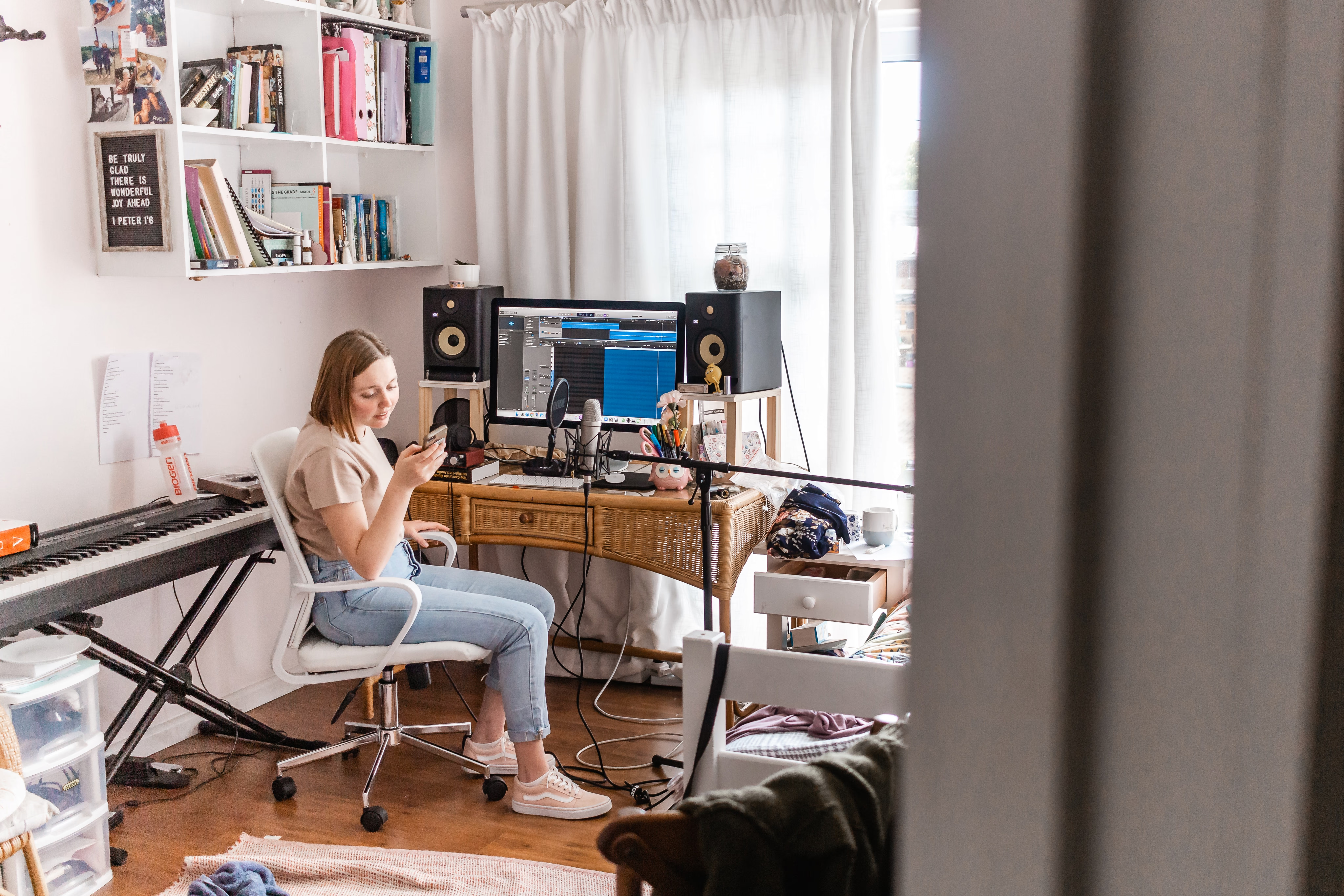Comment écrire une bonne chanson en 5 étapes simples
Comment écrire une bonne chanson en 5 étapes simples

Écrire une bonne chanson, c'est comme entreprendre un voyage musical – it requires both creativity and technique. From crafting compelling lyrics that resonate with your audience to composing melodies that linger in their minds, every aspect of the songwriting process is a delicate interplay of emotions and skill. Whether you're an aspiring songwriter looking to express your innermost thoughts or a seasoned musician seeking to refine your craft, this blog will provide you with valuable insights and practical tips on how to write a good song. So, grab your pen, and let's embark on this musical adventure together. Get ready to unlock the secrets that will help you record music that captivates hearts and stands the test of time.
1. Trouver l'inspiration : Libérez votre créativité
La créativité est le sang vital de toute bonne chanson. To begin the songwriting process, you need to find inspiration. Look around you, delve into your personal experiences, or even imagine a fictional scenario. Embrace the power of observation and reflection. Consider what moves you emotionally and harness those feelings to create a unique and authentic song.
👉 Découvrez l'inspiration pour créer de la musique et transformez les idées en belle musique
2. Écrire des paroles engageantes : Raconter une histoire
Les paroles donnent une voix à votre chanson and connect with your audience on a deeper level. Start by brainstorming ideas, words, and phrases that resonate with your chosen theme or inspiration. Think about the story you want to tell, and use vivid imagery and descriptive language to bring it to life. Pay attention to the rhythm and flow of your lyrics, as they should complement your melody. Experiment with different rhyme schemes and word choices to make your lyrics stand out.
Meilleures pratiques pour les prompts de paroles
Pour obtenir des résultats clairs et cohérents :
- Soyez spécifique – Dites clairement que vous voulez des paroles.
- Définissez la structure – Esquissez couplet/refrain/pont.
- Donnez un thème – par ex. "amour, chagrin d'amour, nostalgie, fête."
- Expérimentez et itérez – Essayez des variations jusqu'à ce que le résultat vous convienne.
👉 Créez facilement des paroles avec le générateur de paroles IA
3. Structurer votre chanson : Couplet, Refrain, Pont
Une chanson bien structurée maintient vos auditeurs engagés from start to finish. The verse sets the scene and introduces the story, while the chorus serves as the emotional core and memorable hook. The bridge provides a contrast or a twist before returning to the chorus. Experiment with different arrangements and consider the balance between repetition and variety. Aim for a clear and cohesive structure that supports the overall message of your song.
Noyau (requis)
- Couplet : La partie principale de la chanson. Tells the story, develops the idea, provides details.
- Refrain (Hook) : La partie la plus mémorable. Repeats the same lyrics/melody, usually the "catchy" highlight.
Optionnel (utiliser selon les besoins)
- Pré-refrain : Connecte le couplet au refrain, builds anticipation.
- Pont : Fournit un contraste, new perspective, or tension before the final chorus.
- Intro : Définit l'ambiance and key at the beginning (instrumental or short lyrical).
- Outro : Ferme la chanson, often repeating phrases or fading out.
- Solo : Section solo instrumentale ou vocale.
👉 Structure de départ la plus simple :
'A' signifie couplet 'B' signifie refrain.
ABAB : couplet→refrain→couplet→refrain
AABAB : Couplet → Couplet → Refrain → Couplet → Refrain
4. Créer une mélodie forte : Hooks et harmonies
Une mélodie forte est l'épine dorsale d'une bonne chanson. Start by experimenting with different chord progressions on your instrument of choice. Explore different rhythms and Genres. Don't be afraid to play around with different notes and intervals to find the perfect hook. Simplicity can be powerful. Keep your melody memorable and easy to sing along to, and explore harmonies to add depth and interest to your song.
5. Ajouter les touches finales : Arrangement et production
Maintenant que vous avez une base solide, it's time to add the finishing touches. Start by refining your arrangement, ensuring each instrument and section enhances the overall sound. Experiment with dynamics, instrumentation, and vocal harmonies to create a rich and textured song. Consider the production elements, such as the choice of recording techniques, effects, and mixing. Pay attention to the overall balance, clarity, and emotion conveyed by the final mix.
En suivant ces 5 étapes simples, you'll be well on your way to writing a good song. Remember to stay true to your own unique voice and to have fun throughout the process. Keep honing your skills and exploring new ideas, and the world of songwriting will continue to unfold before you. Bon écriture !
Découvrir plus d'aperçus AnyMusic

20+ Prompts de chanson qui vous aideront à créer de la musique virale
Apprenez 20+ prompts de chanson pour créer de la musique virale. Conseils d'experts pour des morceaux tendance.
Lire la suite

80+ Prompts de chanson faciles pour commencer
Découvrez 80+ prompts de chanson faciles pour commencer votre création musicale. Parfait pour les débutants.
Lire la suite